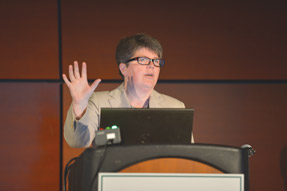Just say ‘no’ to virtual credit cards
Beware the latest trend that many payers are adopting, a kind of virtual credit card that actually incurs a fee to the practice of between 1% and 5%.
If your office has noticed an increase in credit card fees, it could be due to the latest trend in payment by many payers. Instead of issuing a check or electronic funds transfer (EFT), they will provide a 16-digit number, a kind of virtual credit card, that your practice can enter into your credit card machine to pay claims. Staff members may assume that this is an acceptable form of payment because your practice accepts payment by credit card. However, unlike the convenience factor of accepting credit card payment from patients, it is costing your practice money.
The Affordable Care Act requires that all health care plans offer payment using the EFT and electronic remittance advice (ERA) operating standards. Like direct deposit, automated clearinghouse EFT is the standard form of payment that enables health plans to deposit payments directly to provider bank accounts.
Because the fees associated with EFT are paid by the payer, some health plans have been using nonstandard means of electronic payment, such as these virtual credit cards. The payer will issue an explanation of benefits statement, often by fax, that includes a 16-digit number that staff must manually enter into the office credit card machine. While it may be easier than issuing and receiving paper checks, it involves fees that come out of the physician's reimbursement. So, instead of getting the contracted amount, the physician gets the contracted amount minus a 1% to 5% fee. Office staff may notice this practice adopted more often by secondary payers, self-insured plans using third-party administrators, workman's comp, and other small payers as opposed to larger contracted payers.
Physician practices can and should opt out of accepting these virtual credit cards and request payments using the standard automated clearinghouse EFTs. Some plans may prefer a written check, which may be slower, but at least payment is in full with no associated fees.
Office billing staff may need to be aggressive in denying acceptance of these forms of payment from payers. Some health plans will resist, but payment using the ERA/EFT operating standards is the law. Payers may not want to do it, but they can. One approach would be to prepare a standard letter opting out of receiving payment via the virtual credit card and requesting payment via the ERA and EFT standards. Some plans, if you read the fine print, include instructions on how to opt out.
For more information about how much EFT and ERA options cost a practice, go to ACP's Running a Practice website.
The American Medical Association's Electronic Funds Transfer Toolkit is online.




